#2 in Vietnam
Popular Trà Variations

Trà Xanh
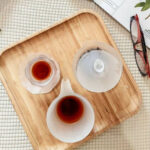
Trà Đen

Trà Ô Long
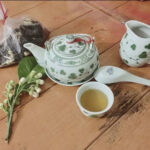
Trà Hương

Trà Sen Tây Hồ

Trà Tân Cương
Trà: Ingredients and Preparation
Main Ingredients
Main Preparing Method
Preparation Process
Trà: A Deep Dive
Cultural Significance
Taste
Texture
Aroma
Color
Serving Style
Serving Temperature
Accompaniment
Occasions
Calories
Popularity
Popular Similar Drinks
- Chinese Tea
- Japanese Tea
Popular Dining Area
Trà, or chè (in the North), is simply Vietnamese tea, a traditional drink that is made by steeping hot water with leaves, buds, or branches of tea, scientifically known as camellia sinensis.
Like many teas worldwide, trà in Vietnam is also dried, oxidized (fermenting), or infused with other herbs, spices, flowers, or fruits.
As a drink, trà comes in 4 varieties black tea, green tea, oolong tea, and white tea. Furthermore, trà provides a great amount of caffeine and antioxidant substances. In Vietnam, a standard trà is aromatic with a slightly bitter and tangy taste.
Drinking tea has been a part of Vietnamese culture for hundreds of years. In a traditional household, guests are often treated to warm tea served in small teacups. Depending on the region, the tea potency varies from being light to a strong profile.
Vietnamese have various ways of processing tea plants, with the oldest method being to use fresh leaves or buds of tea plants for boiling with water.
Another way is people will dry the tea for later usage, while the third method is to infuse it with flowers to create trà hương.
To further understand trà, I’d like to introduce you to various versions of tea in Vietnam before showing you how to steep Vietnamese tea correctly.
Then, explore the pros and cons of drinking trà and inquiries about this drink. Also, I will also suggest drinks that are like Vietnamese trà.
Key Points
Trà Images
What Are the Different Types of Trà in Vietnam?
In Vietnam, each region produces various versions of tea with differences ranging from the types of tea plants to the processing procedures and even the ingredients used to make the tea. For that, let me introduce you to 18 popular tea varieties in Vietnam:
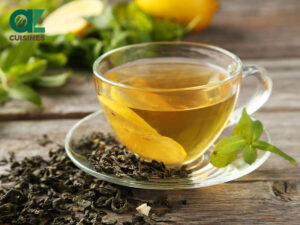
Trà Xanh
Green tea that varies from light to strong flavor
Has light color, high in antioxidants
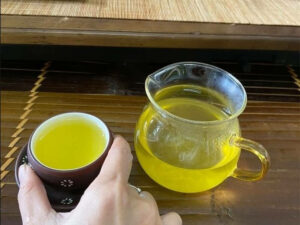
Trà Móc Câu Tân Cương (Hook-shaped Tan Cuong Tea)
Has a slightly tangy flavor
A bright color
The dried tea is hook-shaped
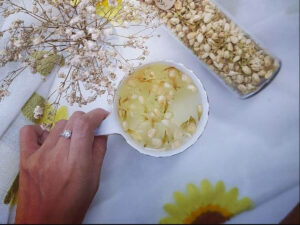
Trà Lài
Jasmine-infused tea, delicate and fragrant
Has a high amount of etheric helps boosting energy and removing toxins

Trà Thiết Quan Âm
A semi-fermented tea
A mixed of green tea and black tea with a slightly chestnut aroma
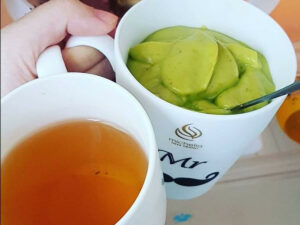
Trà Vằng
Made from the leaves of the Jasminum subtriplinerve, believed to be able to treat high blood pressure, insomnia, liver problems
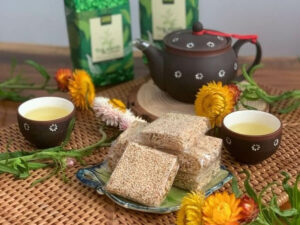
Trà Xanh Thái Nguyên (Thai Nguyen Green Tea)
A renowned green tea from the Thai Nguyen Province
Famous for its bold flavor and aromatic qualities
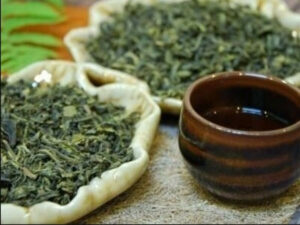
Trà Sâm Dứa (Pandanus Tea)
Infused with pandanus leaves, offering a distinct sweet and grassy flavor
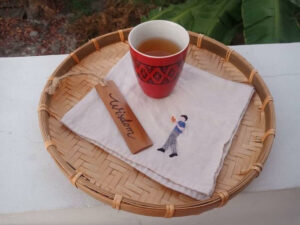
Hồng Trà
This term can refer to a range of darker, sweeter teas
A good hồng trà needs to have a spiral brown leaves when dried with the steeped water having a vibrant red color
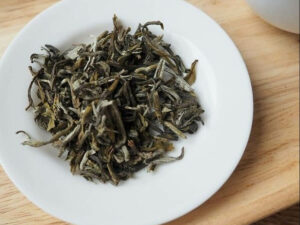
Trà Cổ Thụ Tà Xùa
Made from ancient tea trees
Has a rich and deep flavor with a sweet aftertaste
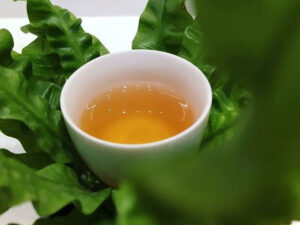
Trà Shan Tuyết Tây Bắc
Grown in high altitudes
Use only young tea buds still having fine white hair
A signature yellow color
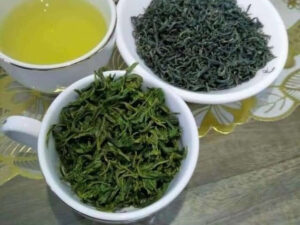
Trà Nõn Tôm
The tea is planted and processed in Thai Nguyen
Has a green-yellow color
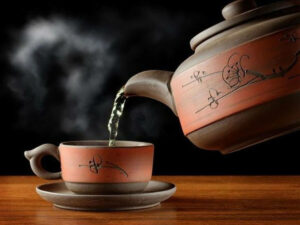
Trà Tân Cương
A type of green tea from the Tan Cuong area
Noted for its strong aroma and deep color

Trà Sen Tây Hồ
Named after the Tay Ho area in Hanoi
Has a high market value in Vietnam
A translucent light green color once steeped
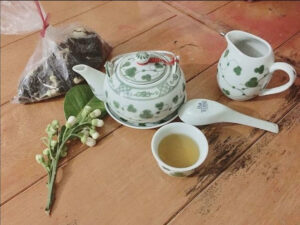
Trà Hương
Infused with aromatic flowers, like jasmine or pomelo, for a fragrant bouquet.
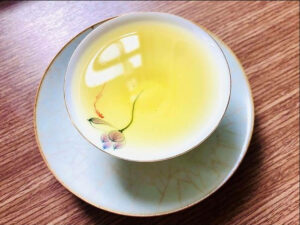
Trà Ô Long
Oolong tea that is partially oxidized with complex flavors
Has a high level of antioxidants

Trà Đen
Black tea with a robust flavor, darker color, and fully oxidized leaves
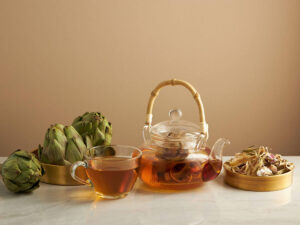
Trà Atisô
A herbal tea made from artichoke leaves
Light in flavor, often consumed for its purported health benefits
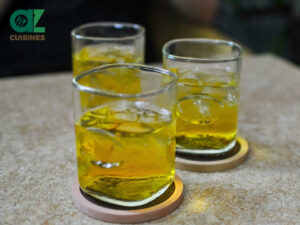
Trà Đá
Vietnamese iced tea made with green or black tea served cold with ice
After going through all the tea variations in Vietnam, I strongly suggest looking into the process of steeping a great cup of tea in the country to understand more about their culture.
How to Steep Trà in Vietnam?
In Vietnam, there are no specific rules to how tea is steeped and served. However, these are a few procedures that locals often go through to ensure the best quality tea for serving:
Step 1: Select Good Quality Tea
Start with high-quality Vietnamese tea. Popular choices include trà xanh (green tea) and trà ô long (oolong tea).
Step 2: Heat Water to the Correct Temperature
The water temperature is crucial and varies depending on the type of tea. For green teas, water should be between 70-80°C (158-176°F), while for oolong teas, it’s typically around 80-90°C (176-194°F).
Step 3: Rinse the Tea Leaves
If you’re following traditional methods, you’ll first rinse the tea leaves by pouring hot water over them, then quickly discarding this water. This cleanses the tea and helps to open up the leaves for a better infusion.
Step 4: Steep the Tea
Add hot water to the tea leaves. Steep for the appropriate time, anywhere from 1 to 5 minutes, depending on the tea type. Green teas often require less time, while oolong teas can withstand longer steeping.
Step 5: Pour and Serve
Pour the tea into teacups for serving.
Step 6: Savor the Tea
Enjoy the tea slowly, appreciating its aroma, color, and flavor nuances.
Steeping tea in Vietnam is simple and all, but there’s more to it as you should know more about how the tea ceremony works out in the country.
How to Do a Vietnamese Tea Ceremony?
In Vietnamese culture, the tea ceremony is not as complex as in China or Japan though it’s also influenced by the Chinese. Typically, the Vietnamese tea ceremony is also about simplicity and enjoying the drink with people from the neighborhood.
Usually, people of any age will gather at a local drink store to have tea and discuss all sorts of business during the process of drinking it. People will gradually enjoy the tea over time while enjoying the stories of others.
Ideally, a set of tools used for the Vietnamese tea ceremony includes a teapot, small cups, a tea tray, a tea box, a water kettle, and a strainer. Don’t forget to check out the benefits and drawbacks of drinking trà to further understand tea in Vietnam.
Pros and Cons of Drinking Trà
Here are the good and bad aspects that people need to be aware of before drinking tea:
Pros
Cons
After knowing the effects of drinking Vietnamese tea, make sure to have a look through some of the common inquiries about this type of drink.




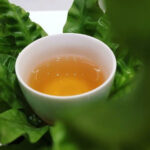
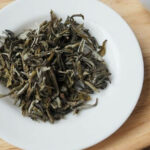
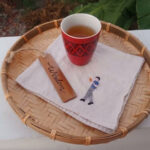
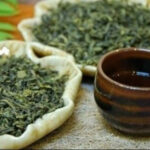
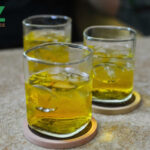
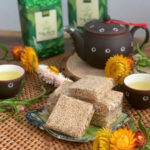

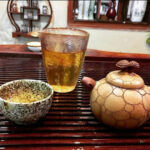
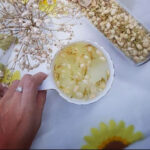

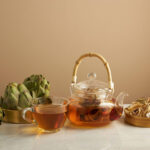

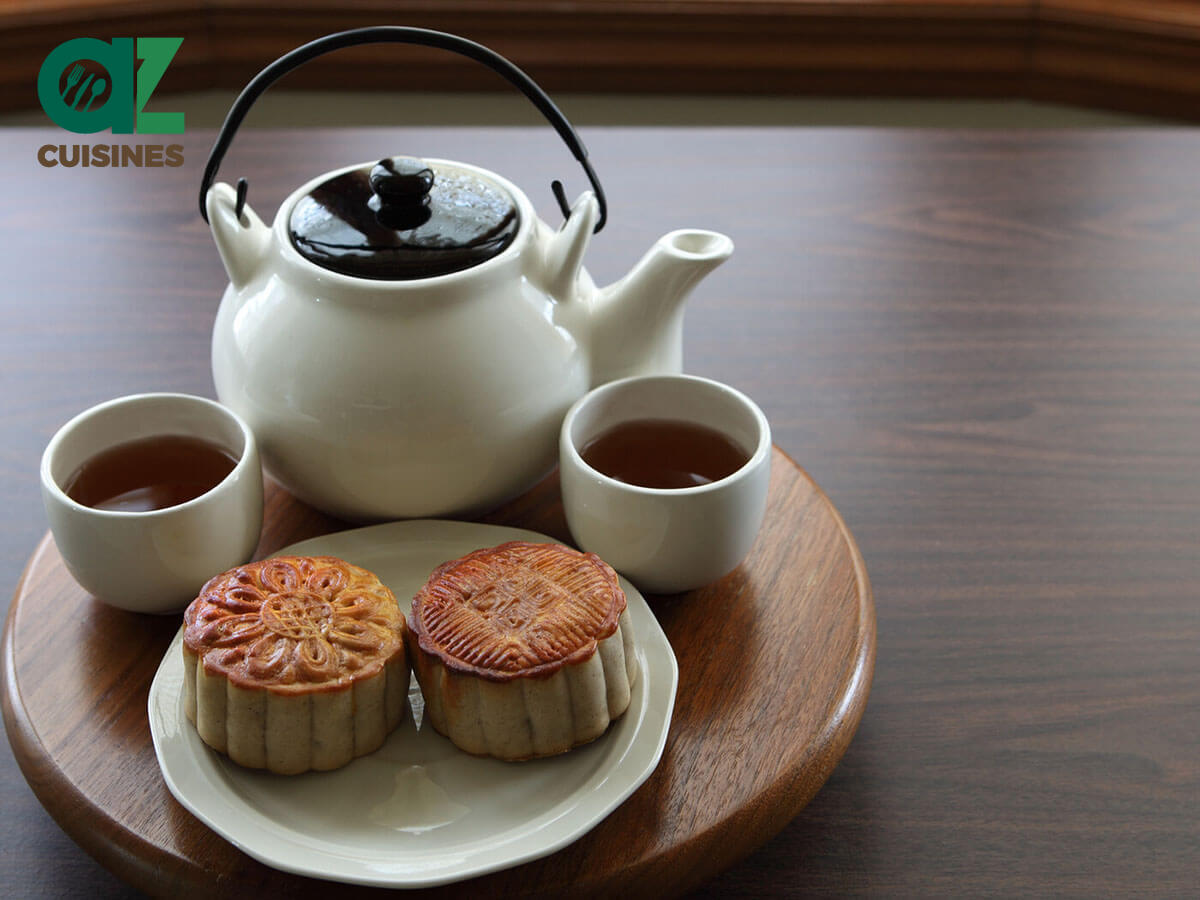


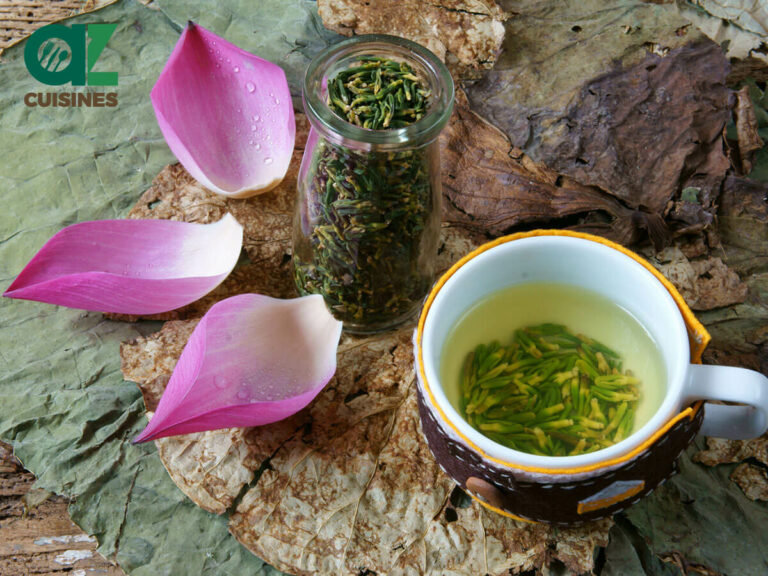
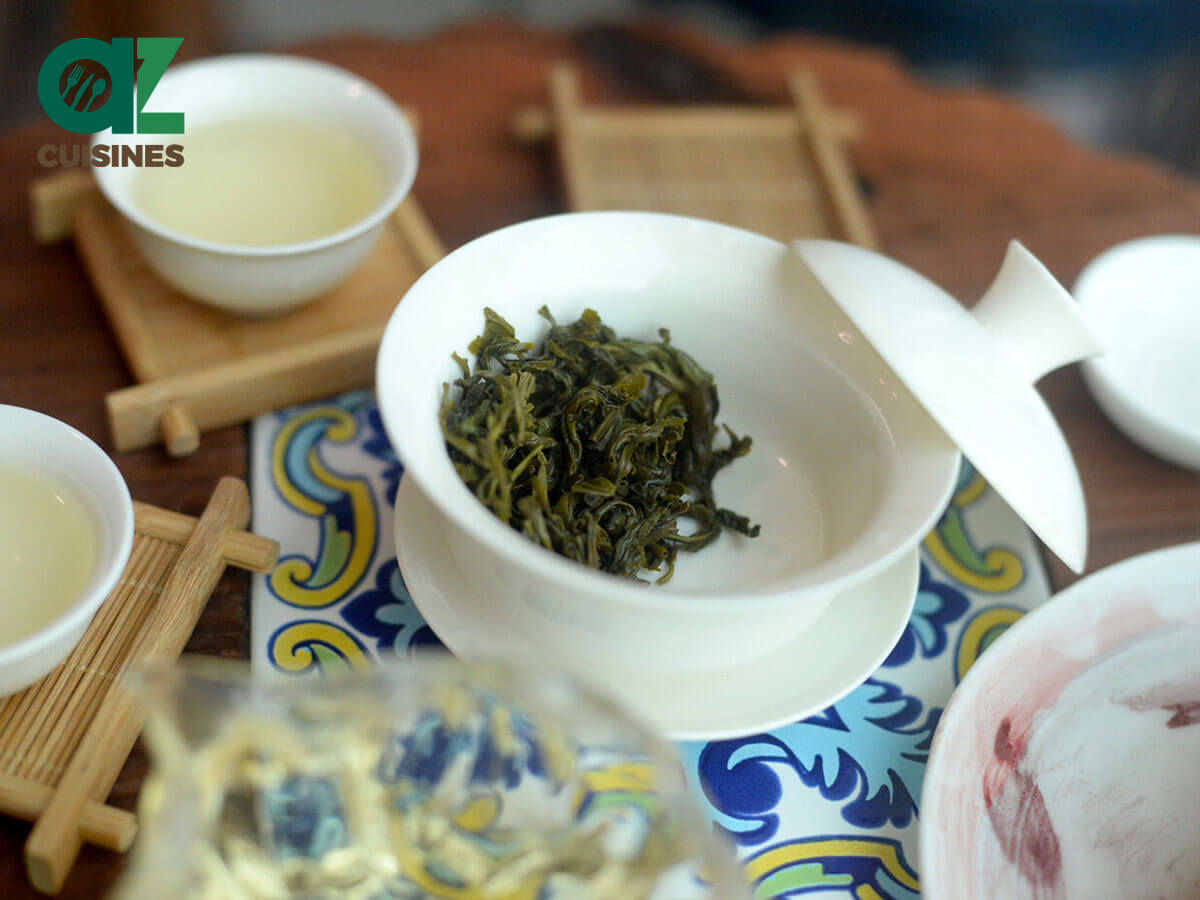

Adam Sam
Senior Food and Drink Editor
Expertise
Food Writer & Recipe Developer, Recipe Tester, Bartender, Cooking-video Maker, Editor In Chief
Education
Adam Sam, an experienced food writer and recipe developer, is passionate about blending diverse culinary traditions, national dishes, and innovative beverages, showcasing his proficiency in both traditional and modern recipe testing.
As the Editor-in-Chief, he elevates culinary content from street food to fine dining, focusing on Western cuisine and types of drinks at azcuisines.com, and is professional in creating engaging cooking videos that simplify complex dishes and ingredients.
His passion for food is evident in his writing, where he uniquely merges various cultures, traditions, and contemporary trends, skillfully combining classic recipes with modern cooking methods.